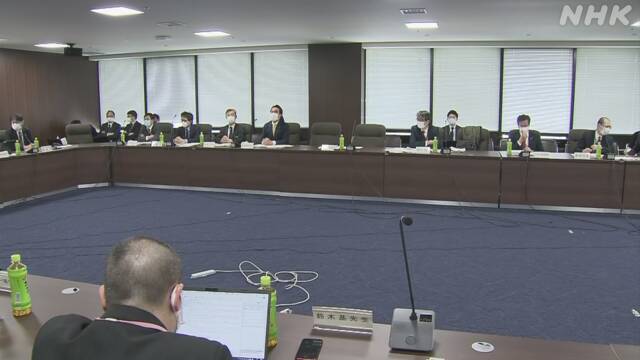On the 17th, Prime Minister Suga announced that he would cancel the ongoing state of emergency in one of the three prefectures in the Tokyo metropolitan area by the deadline of 21st of this month.
Prior to this, an expert meeting of the Ministry of Health, Labor and Welfare was held to advise on measures against the new coronavirus, and it was pointed out that "in urban areas, the infection may have already spread and rebounds have begun to occur."
It is said that it is necessary to take measures such as urgently strengthening the monitoring system for mutant viruses, which are said to be highly infectious, and strengthening tests and investigations of infection routes again.
At the meeting, the analysis focused on the situation in each of the three prefectures where the state of emergency was declared.
According to the reported data, the average number of new infections per week up to the 16th was
1.10 times higher than the previous week in Tokyo,
1.17 times higher in Saitama prefecture,
0.92 times higher in Chiba prefecture, and
▽ Kanagawa prefecture. Has stopped declining to 0.88 times, and the proportion of younger generations among infected people is increasing, and the flow of people is increasing again.
On the other hand, regarding the medical care provision system, the trend of improvement in hospitalization adjustments in local governments continues, and the bed usage rate continues to fall below the stage 4 index, indicating a reduction in the burden.
Even nationwide, it turns to an increasing trend of 1.09 times
In addition, the declaration has already been lifted.
▽ The number of infected people in 2 prefectures and 1 prefecture in Osaka, Kyoto, and Hyogo prefectures is 1.33 times that of the previous week, and
▽ 0.95 in 2 prefectures in Aichi and Gifu prefectures. Double,
▽ Fukuoka prefecture is 1.15 times.
In addition to this,
▽ Miyagi prefecture is 1.65 times,
▽ Okinawa prefecture is 1.44 times, and it is said that the spread of infection is seen mainly in the 20s and 30s, and it has turned to an increasing trend of 1.09 times nationwide.
Some point out that rebounds may be starting to occur.
For these reasons, the expert meeting analyzed the infection situation nationwide as "it has been flat to slightly increasing since the beginning of this month", and especially "in urban areas including the Kansai region, rebounds may have already begun to occur. There is also an indication that ".
For this reason, the expert meeting should note that the cancellation of the state of emergency induces rebound, and immediately strengthens the monitoring system for mutant viruses that are said to be highly infectious, and conducts inspections and investigations of infection routes. It is said that measures such as strengthening again are necessary.
In addition, clusters at restaurants continue to occur depending on medical institutions and facilities for the elderly and areas, and clusters related to karaoke are also occurring, such as graduation ceremonies, welcome and farewell parties, cherry blossom viewing, etc. from the end of the year to the beginning of the year. In addition to refraining from banquets and trips associated with annual events as much as possible, it is necessary to be careful not to spread the infection because it often involves movement and training when joining the company or enrolling at the beginning of the year.
He also pointed out that it is necessary to steadily promote vaccination and to improve the system to flexibly provide medical care when the infection spreads in preparation for the next wave of infection spread.
Chairman Takaji Wakita said, "Although the cancellation of the state of emergency is being considered, the number of infections is increasing especially in the younger generation in their 20s and 30s in Tokyo and Saitama. We know that it will start from the younger generation, and even if the declaration is lifted, it is important to continue to take appropriate measures. "

